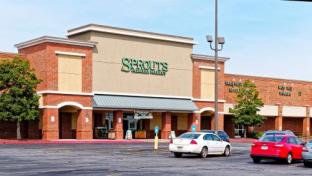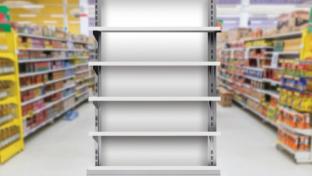Your Burning Whole Foods Market Questions Answered
Is it a mini Whole Foods Market?
Or is it a rethink of the company's now-defunct 365 by Whole Foods stores?
Maybe it's an Amazon Go or Amazon Fresh, but smaller and with juice bars?
According to Christina Minardi, EVP growth and development for Whole Foods Market and Amazon, the new format the retailer announced this week — called Whole Foods Market Daily Shop — will be all of those and none of those, rolled into one.
"The idea of doing Daily Shop stores has been on my mind for quite a few years, even before we embarked on the 365 format," Minardi said, referencing the retailer's former banner, 365 by Whole Foods Market, launched in 2016 but shuttered a few years later.
"The 365 stores were about 25,000 square feet, while our new Daily Shop stores are 7,000 to 14,000 square feet," Minardi said. "The 365 stores did have some bars and more service departments. We did a deep dive so we could understand what we did really well with the 365 stores and where some opportunities were as we are embarking on this concept. And 365 was at a time when we really needed to work on our price image. I mean that's the beauty of having a parent company like Amazon. We've really done great work on our price image the last several years."
Whole Foods Market does many things well, especially when it comes to experimenting with innovation -- something made even easier after Amazon acquired it in 2017.
Before the pandemic hit, the retailer decided to experiment again with a small space in lower Manhattan.
"We did a little test of one store in a 2,500 square foot space in our Chelsea store in Manhattan, and this was before COVID," Minardi said. "I remember us just brainstorming. We had a whole bunch of names written up on the board and Daily Shop was the one that stuck, because this is just that. Our customers can shop here every day, whether you're getting your milk or your bread, our beautiful produce with all of our standards, or our meats. Or they can shop because they're having a dinner party and they need to make dinner for a bunch of friends. We're going to be able to service all of that with this Daily Shop store."
Convenience Play
Whole Foods Market says the new store format is designed to provide customers in urban neighborhoods a quick, convenient shopping experience with easier access to the fresh, elevated offerings they expect from Whole Foods Market. The Daily Shop format will initially launch on the Upper East Side in Manhattan with additional locations in New York City to follow.
The first store, located at 1175 Third Avenue, is expected to open this year.
The Daily Shop stores are about a quarter to half the footprint of an average 40,000 square foot Whole Foods Market store, paving the way for expansion in dense, metropolitan areas. In bustling hubs such as Manhattan where proximity matters, these stores will bring Whole Foods Market closer to existing customers, while extending the company’s reach to others in surrounding neighborhoods.
"Daily Shop is going to make our products and our stores more available to people," Minardi said. "We really see this concept as a store that will appeal to our Whole Foods shoppers, our loyal Whole Foods shoppers, and then open us up to other shoppers that don't traditionally shop Whole Foods all the time because it's all about a convenience play with this store."
Whole Foods Market Daily Shop will provide a convenient option for grab-and-go meals and snacks, weekly essentials, and a quick, easy destination to pick up ingredients to complete a meal – with all items meeting the company’s rigorous quality standards.
The Daily Shop stores will offer self-checkout and staffed checkout, but not delivery or pickup for now. They also won't offer Just Walk Out tech, at least not yet.
[Never miss a story – sign up for Progressive Grocer's FREE Daily newsletter]
"For the first two Daily Shops, we're not doing delivery or pickup," Minardi said. "We are looking at it for some of our future ones; it'll depend on the size, the area and if we have the Zip code demand in that area. But it's not off the table. We're exploring every single site for whether we want to offer Amazon returns, whether we want to have pickup, whether we want to have delivery. But the first two, for right now, no, we're just concentrating on making it a great convenience play for our customers."
Though smaller, the stores will offer a curated assortment of Whole Foods Market favorites, including a selection of fresh, seasonal produce, meat and seafood, prepared foods like sandwiches and pre-packed meals, breads, alcohol, and supplements, as well as a handpicked range of local specialties and private brand 365 by Whole Foods Market products. In addition, the location that is expected to open this year will be the first Whole Foods Market store in Manhattan to offer Juice & Java, a venue for coffee, tea, fresh pressed juices, smoothies, sandwiches, soups and various desserts.
“At our new store formats, we’re tailoring every square foot to the unique, fast-paced needs of urban lifestyles," Minardi said.
I asked Minardi how much tailoring?
"We're going to introduce a few new local vendors to the store," Minardi said. "And then we're also talking to the hundreds of local vendors that we have in New York about doing an extension of their line to do a couple special ones for this particular store."
In addition, the stores will feature a layout she called "The 360."
"We designed it so that everywhere you look, no matter where you stand in the store and you stop, if you turn all the way around in a circle, all you're going to see is food," Minardi said. "We intentionally did that to really maximize the space in the store for retailing."
Minardi says the company has done great work with its other locations of reducing the back of the house space, "and we adopted those learnings obviously for this store as well. So it really allows us to maximize the 10,000 square foot space to have a good-sized sales floor. And it's going to have all the departments that, like a regular Whole Foods has."
Following the New York City launch, Whole Foods Market plans to bring the format to other cities across the country.
In fact, the new format is part of an aggressive expansion plan for the retailer.
Growing the Pipeline
In 2023, Whole Foods Market added its 17th store in New York City at One Wall Street. Whole Foods Market currently has more than 530 stores in the United States, United Kingdom and Canada with more than 75 stores in the pipeline.
"It's really good to have [Amazon SVP of Worldwide Grocery Stores] Tony Hoggett leading worldwide grocery; he's been really very vocal about our goals of creating a best-in-class grocery experience, whether that's a Whole Foods Market, a Daily Shop, an Amazon Go or an Amazon Fresh," Minardi said.
Minardi says Hoggett has also been instrumental in optimizing operations for all of the company's grocery banners.
"A couple of years ago he tapped me to oversee real estate store design and construction for Amazon's physical stores," she said. "The first thing we did was take our real estate team and combine it so it's made up of Whole Foods Market team members and Amazon team members. And the way we've structured their work is they're now geographically dispersed. Now they're experts in the markets that they're in, where before, we had real estate managers that were just working on Amazon Go and Fresh and just working on Whole Foods Market. So you can see the efficiencies, but also how we get the strength of the real estate managers to really understand their market and know all their markets. So that's really helped us increase our pipeline."
[RELATED: Why Location Really Is Everything]
According to Minardi, Whole Foods Market has signed 35 leases this year: 30 leases for Whole Foods Markets and five for Daily Shops.
"And we're really excited about that. There's a good amount of white space for Whole Foods Market to continue growing," she said.
Minardi says Whole Foods Market is actually leveraging a science team from Amazon to determine the optimal size of new stores.
"They've really helped us look at what's the right size store for the market," Minardi explained. "Should we be building a 50,000 square foot store there or should it be a 30? And it's really helping us open up our real estate portfolio to look at all different sizes because we're going to go in there knowing what's the right size and we're not just stuck on 40,000. Again, some markets might be 30 and other markets might need a 50. So we're not pigeonholing ourselves in one prototype. And that's what I love about Daily Shop. It gives us a whole other avenue. Finding that type of real estate is quicker. We can build them faster. So it's really exciting, this pipeline now, increasing this pipeline."
Minardi talked about how Amazon has also helped with increasing efficiencies when it comes to store development and operations.
"We were for so many years a very decentralized company," she said. "When I was a regional president in the Northeast, I had my own construction team, my own IT team, my own meat buyer. And obviously we've brought a lot of that now under one banner and construction store development and design was one of the last areas to move. And we've moved that in the last three years. So instead of designing stores 10 different ways, we're designing under one banner. And that's not changing the experience for the customer, because our stores are still different. They still reflect the area that we're in."
Minardi said Amazon is helping the retailer optimize the back of the house.
"There's a time we would buy different break room furniture for every single store," Minardi said. "There's no efficiency in that. So now we've got three different styles of break room furniture. So we can go to the vendor and say, 'Listen, we're buying for 50 stores, not from one store.' So you can see we're leveraging our buying power. And now that I've combined overseeing the Amazon team, we're looking at what efficiencies that we find with them with equipment buying because now we have one buying team. So that's really how we're really battling that, is really using the buying power of our Whole Foods Market and Amazon to make better deals and not doing it in silos."
In late February, Whole Foods Market debuted a 40,000 square foot store in St. Petersburg, Florida. This was a week after opening a store in Albuquerque, New Mexico.
This week the company opened the application process for its 2024 Local and Emerging Accelerator Program, a way to seek out emerging food brands to add to shelves.
Austin, Texas-based Whole Foods has more than 500 stores in the United States, Canada and the United Kingdom. The company is a wholly owned subsidiary of Seattle-based Amazon, which is No. 2 on The PG 100, Progressive Grocer’s 2023 list of top food and consumables retailers in North America. Both Whole Foods and Amazon were named among PG’s Retailers of the Century.








